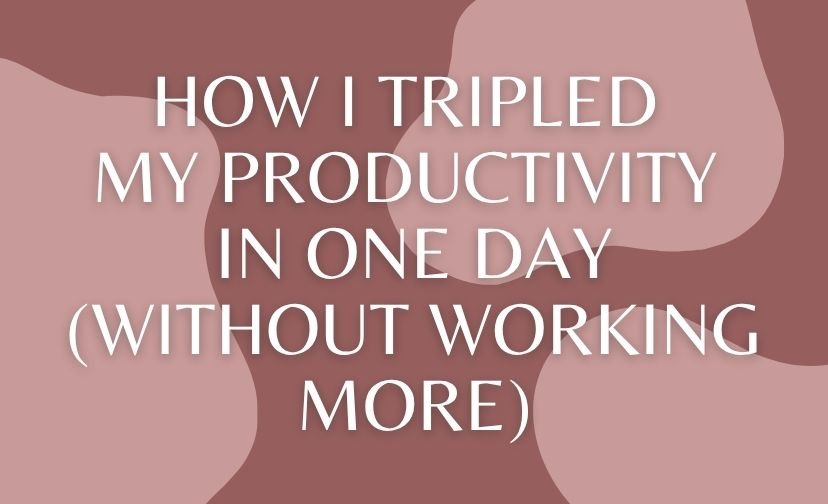Imagine transforming your chaotic workday into a symphony of productivity and focus. The secret lies in harnessing the power of two popular time management strategies: Time Blocking vs. Pomodoro. These techniques promise to revolutionize how you approach tasks, helping you achieve more with less stress.
In this guide, we delve into the mechanics of each method, explore their benefits, and provide step-by-step instructions for implementation. Whether you’re juggling multiple projects or simply seeking a more structured day, these methods can be your compass.
Prepare to discover which technique suits your unique rhythm and how you can blend them to create a harmonious workflow.
Understanding Time Management Techniques
Time Blocking vs. Pomodoro stand out as powerful contenders. These methods are more than just buzzwords; they are proven strategies that cater to different working styles. Understanding these approaches can unlock the door to enhanced efficiency and reduced burnout. Let’s take a closer look at each one.
What is Time Blocking?
Time Blocking is akin to creating a roadmap for your day. It involves dividing your schedule into blocks of time, each dedicated to a specific task or activity. You eliminate the guesswork and minimize distractions by assigning tasks to predetermined slots.
This method particularly benefits those who thrive on structure and must juggle various responsibilities. Imagine having a blueprint that guides you seamlessly from one task to the next, ensuring no wasted time.
When setting up your time blocks, consider your energy levels throughout the day. Allocate demanding tasks to when you’re most alert and creative. This ensures that you work with your natural rhythms rather than against them.
What is the Pomodoro Technique?
Named after the Italian word for tomato, the Pomodoro Technique is a simple yet effective way to boost concentration. It revolves around breaking your work into intervals, traditionally 25 minutes long, separated by short breaks. This cyclical approach prevents fatigue and maintains high levels of focus.
Like a tomato timer ticking away, it encourages you to immerse yourself in a task without succumbing to interruptions. The beauty of Pomodoro lies in its flexibility, making it ideal for those who need bursts of intense focus.
Customize your Pomodoro intervals to match the complexity of your tasks. While 25 minutes is standard, some tasks may require longer focus periods. Adjust accordingly to maintain momentum.

Comparing Time Blocking vs. Pomodoro
While both methods aim to enhance productivity, they cater to different needs and preferences. Understanding the nuances of Time Blocking vs. Pomodoro will help you determine which aligns best with your work style.
Key Differences and Similarities
Time Blocking offers a bird’s-eye view of your day, emphasizing planning and organization. It’s like painting your schedule with broad strokes, each color representing a different task. In contrast, the Pomodoro Technique zooms in, focusing on short bursts of concentrated effort.
Despite these differences, both methods share a common goal: maximizing productivity and minimizing procrastination. They both require discipline and commitment but offer the reward of a more controlled and satisfying workday.
| Aspect | Time Blocking | Pomodoro Technique |
|---|---|---|
| Structure | Planned schedule with dedicated blocks | Short, timed intervals with breaks |
| Flexibility | Less flexible, requires adherence to schedule | More flexible, allows adjustment of intervals |
| Focus | Broad focus on entire day | Narrow focus on individual tasks |
When to Use Each Technique
Choosing between Time Blocking vs. Pomodoro often depends on the nature of your work and personal preferences. If your day is filled with diverse tasks requiring different levels of attention, Time Blocking provides a comprehensive framework. It allows you to allocate time according to priority and urgency.
On the other hand, if your tasks demand deep concentration and minimal interruptions, the Pomodoro Technique can help maintain your focus and energy. Consider experimenting with both methods to discover which resonates with your workflow.
Combine elements of both techniques for a tailored approach. Use Time Blocking for broad scheduling and Pomodoro intervals within those blocks for focused work sessions.

Implementing Time Blocking in Your Workday
Now that we’ve explored the foundations, it’s time to dive into the practical application of Time Blocking. Implementing this technique can transform your approach to daily tasks, providing clarity and purpose.
Step-by-Step Guide to Time Blocking
1. Identify Tasks: Start by listing all the tasks you need to complete. Include both professional and personal responsibilities.
2. Prioritize: Rank tasks based on urgency and importance. This helps in allocating appropriate time blocks.
3. Create Blocks: Divide your day into segments, assigning tasks to each block. Ensure there’s room for breaks and unexpected events.
4. Set Boundaries: Stick to your schedule as much as possible. Communicate your availability to minimize disruptions.
5. Review and Adjust: At the end of the day, review what you’ve accomplished. Adjust your blocks for the following day based on any changes or lessons learned.
Tips for Effective Time Blocking
To maximize the benefits of Time Blocking, consider these additional strategies. First, incorporate buffer time between tasks to account for overruns or unexpected delays. This ensures a smoother transition from one task to another.
Second, use digital tools like calendars or time-tracking apps to keep your schedule organized and accessible. Lastly, be realistic about your capabilities and avoid overloading your day with too many tasks. This prevents burnout and maintains your productivity momentum.

Harnessing the Power of the Pomodoro Technique
With its structured intervals and focus-driven approach, the Pomodoro Technique can become your ally in tackling even the most daunting tasks. Let’s explore how to harness its full potential.
Step-by-Step Guide to the Pomodoro Technique
1. Choose a Task: Select a task you wish to focus on. Ensure it’s something that can be completed in a few sessions.
2. Set a Timer: Use a timer to set a 25-minute interval. This is your Pomodoro session.
3. Work Intensely: Dedicate the entire interval to the task, avoiding all distractions.
4. Take a Break: Once the timer rings, take a 5-minute break to recharge. Step away from your workspace if possible.
5. Repeat: After completing four Pomodoros, take a longer break of 15-30 minutes to rest and reflect.
Tips for Maximizing Pomodoro Sessions
Enhance your Pomodoro experience by customizing it to suit your needs. Experiment with different interval lengths to find what works best for various tasks.
Additionally, consider using noise-canceling headphones or ambient music to create an optimal environment for concentration. Finally, track your progress over time to identify patterns and adjust your technique accordingly.
Real-Life Applications and Success Stories
The true testament to any productivity technique is its real-world application. Discover how individuals have transformed their workdays using Time Blocking vs. Pomodoro.

Case Studies: Time Blocking in Action
Consider the story of Sarah, a marketing manager juggling numerous campaigns. By implementing Time Blocking, she was able to allocate specific times for brainstorming, meetings, and administrative tasks.
This structure allowed her to focus deeply on creative work without the constant interruption of emails and calls. As a result, her productivity soared, and she found herself with more time to innovate and strategize.
Case Studies: Pomodoro Technique Success
John, a freelance writer, faced challenges in maintaining concentration during long writing sessions. Adopting the Pomodoro Technique transformed his workflow. By breaking his writing into manageable intervals, he maintained high levels of creativity and output.
The regular breaks prevented mental fatigue, allowing him to produce higher-quality work consistently. John’s story is a testament to the power of Pomodoro in fostering sustainable productivity.
Overcoming Common Challenges
Despite the effectiveness of these methods, challenges may arise. Understanding and addressing these hurdles is key to maintaining a productive routine.

Dealing with Distractions
Distractions are productivity’s nemesis, often lurking in the form of notifications, social media, or unexpected interruptions. Combat these by creating a dedicated workspace free from clutter and digital temptations.
Consider using apps that block distracting websites during work sessions. Moreover, communicate your work schedule to colleagues or family members to minimize unplanned disruptions.
Staying Motivated and Accountable
Maintaining motivation can be challenging, especially during lengthy projects. Set clear, achievable goals and celebrate small victories along the way. Share your progress with a colleague or friend to build accountability. This not only keeps you motivated but also provides a support system when challenges arise.
Incorporate motivational quotes or reminders in your workspace. These serve as constant encouragement to stay focused and driven, especially during challenging days.
Making the Choice: Time Blocking vs. Pomodoro
The decision between Time Blocking vs. Pomodoro ultimately hinges on your personal preferences and work requirements. Evaluating your work style is crucial in making an informed choice.
Evaluating Your Work Style
Reflect on how you naturally approach tasks. Do you prefer detailed planning and a structured day, or do you thrive on intense focus with regular breaks? Consider your past experiences with productivity techniques and identify what has worked well for you. This introspection will guide you in choosing the most suitable method.

Combining Techniques for Optimal Productivity
Sometimes, the best solution is a blend of both worlds. By integrating Time Blocking with Pomodoro intervals, you can enjoy the benefits of structured planning and focused execution.
Use Time Blocking to outline your day and insert Pomodoro sessions for tasks that require deep concentration. This hybrid approach can lead to a harmonious and productive workday.
Your Path to Enhanced Work Efficiency
Embarking on a journey to improve work efficiency involves creating a personalized productivity plan. Tailor your approach to align with your unique needs and preferences.
Creating a Personalized Productivity Plan
Start by assessing your current workflow and identifying areas for improvement. Set clear objectives and determine which tasks require the most attention. Choose the technique—or combination of techniques—that best suits your goals. Regularly review and adjust your plan to accommodate changes in workload or priorities.
Encouragement to Experiment and Adapt
Remember, productivity is a personal journey. Don’t hesitate to experiment with different strategies and adapt them to your evolving needs. What works today may require adjustments tomorrow. Embrace the flexibility of these techniques and trust your intuition to guide you towards a more efficient and fulfilling workday.
As you embark on this journey of mastering Time Blocking vs. Pomodoro, we encourage you to share your experiences and insights. Engage with others who are exploring these techniques and exchange tips for success.
Your feedback is invaluable in refining these methods and inspiring others to enhance their productivity. Together, let’s transform our workdays into a symphony of focus and achievement.





